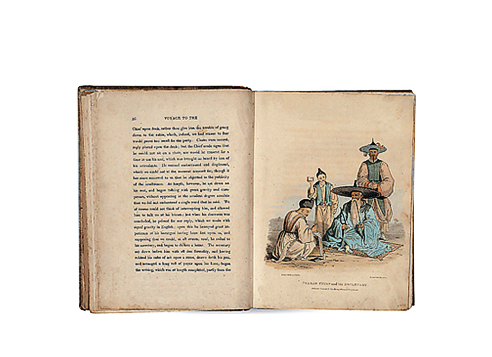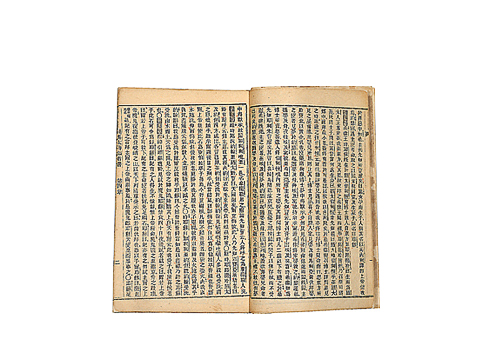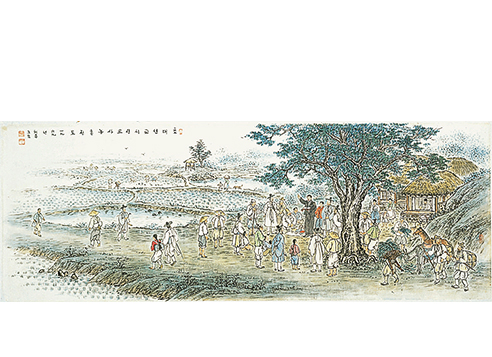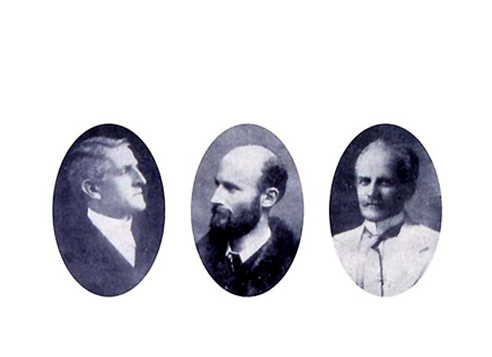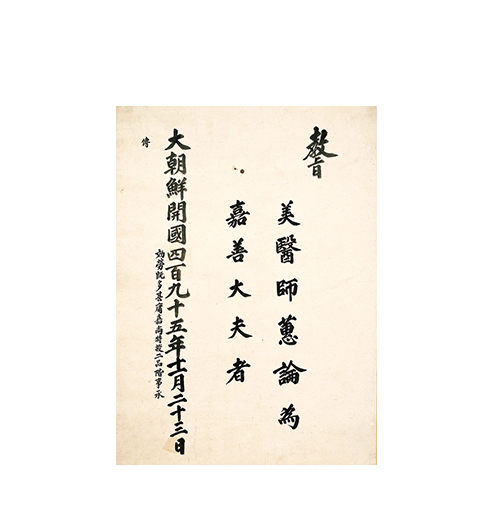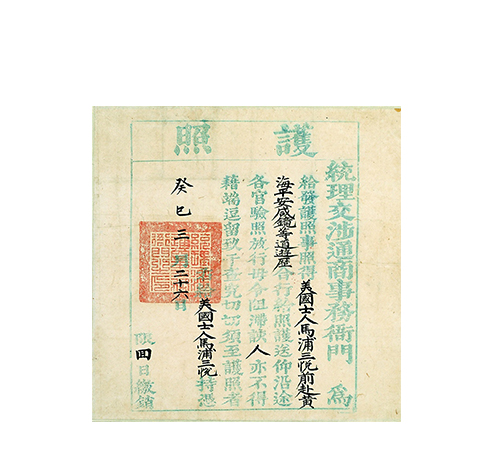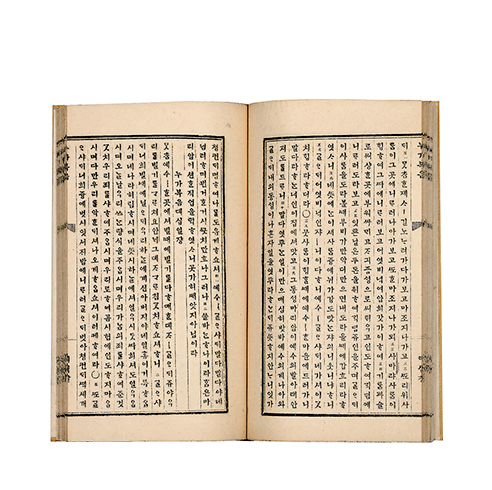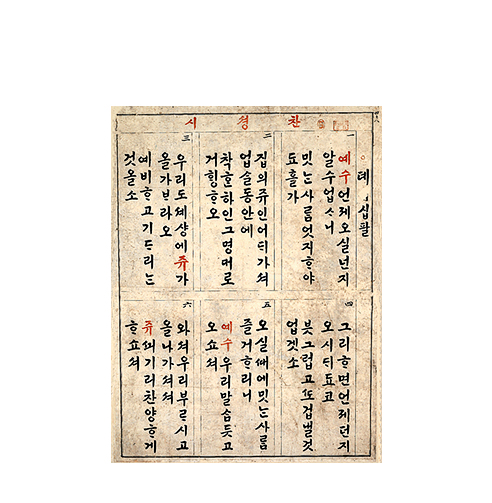The Christianity in Korea Room houses artifacts relating to the Nestorian heritage, the historical origins of Korean Christianity and the acceptance of the Catholic faith, the growth and persecution during the later period of the Joseon Dynasty, the spontaneous acceptance of Protestantism and the activities of Protestant missionaries, and Korean bibles, all of which offer an insight into the development of Korean Christianity.
Permanent Exhibition
-
- Exhibition
- Permanent Exhibition
- History Hall for Christianity in Korea
Category Title
Missionary Work by Foreign Missionaries
In the early 19th century, foreigners traveling to and from China attempted to preach the gospel in the isolated kingdom of Joseon. In 1816, Basil Hall, the captain of the British ship Lyra, dropped anchor off the west coast of Korea and presented a copy of the Bible to Korea. In 1832, the missionary K. F. A. Güzlaff arrived in Hwanghae Province, distributed copies of the Chinese Bible, and attempted to preach the gospel, though he failed to make contact with the government authorities. In 1866, the Rev. R. J. Thomas, a member of the London Mission Association, attempted to deliver copies of the Chinese Bible and preach the gospel on the Korean Peninsula, but he was martyred as a result of the ‘General Sherman ship incident'. This incident raised the West's awareness of Korea, and after the conclusion of the Korea-U.S. Commerce Treaty in 1882, missionaries from various American denominations began to be dispatched to preach the gospel in Korea.
Foreign Missionaries' Entry into Korea and Missionary Activity
The first Protestant missionary to enter Korea (in 1884) was H. A. Allen, a missionary doctor. The following year, as H. G. Underwood from the Northern U.S. Presbyterian Church and H. G. Appenzeller from the U.S. Methodist Episcopal Church entered Korea, missionary work by foreign pastors began in earnest. Subsequently, the Anglican Church, the Australian Presbyterian Church, and the Canadian Presbyterian Church all dispatched missionaries to Korea. During the initial stages these missionaries preached the gospel mainly through churches, hospitals, and schools. This so-called trinity mission method was utilized, taking into account Joseon society's prejudice against the West and its religious exclusivity. Medical mission and educational mission activities were particularly effective in easing Korean society's sense of the rejection of foreign religion, and were successful in captivating many Koreans' hearts.
Literary Mission Activities by Foreign Missionaries
Foreign missionaries to Korea employed gospel preaching methods through educational, medical, and literary missions. As early as possible they published newspapers and magazines, along with Bibles and hymns in particular, and strove to enlighten the people and preach the gospel. Missionaries active in Seoul and sharply aware of the need for a literary mission organized the Bible Translation Committee, beginning Bible translation work in 1887; they published The Gospel of Luke in 1890 and The New Testament in 1900. The Bible translation work by these missionaries was naturally based on the Korean Bible that had been translated into Korean by Koreans. Alongside these efforts, missionaries translated and spread the catechism and gospel messages, thus contributing to the growth and development of Korean Christianity.
